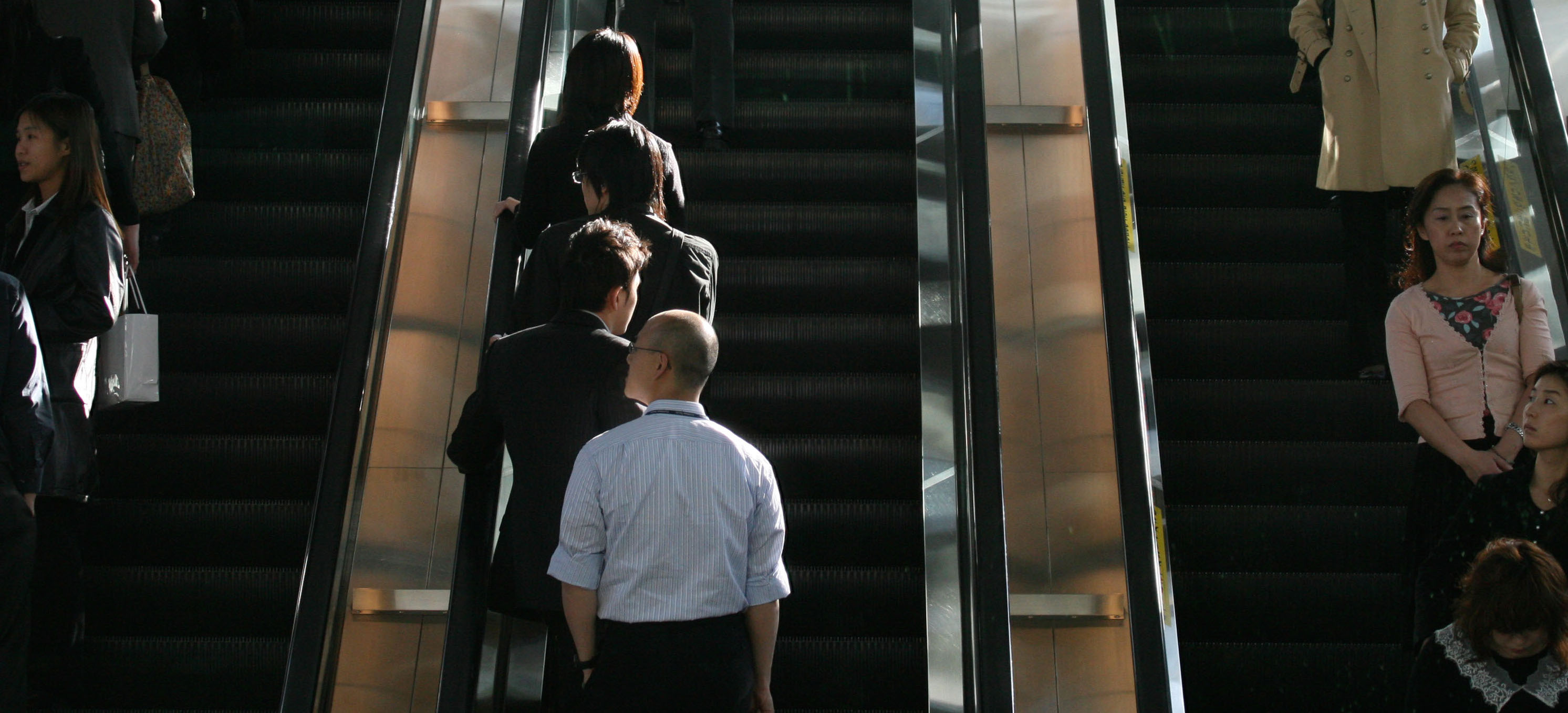The Osaka Metropolitan Government is considering an ordinance that would compel people in this city to stand on the left side of escalators and use the right when passing others.
Residents of the city and many neighboring Kansai vicinities have customarily stood on the right while the rest of the country have taken the opposite stance.
Officials said Tuesday that the move would put Osaka in line with Tokyo and put an end to confusion by tourists in the leadup to the 2020 Olympics.
Voting is slated for May 1. If the ordinance is implemented, those found standing on the right-hand side would receive a verbal warning. After Dec. 1, violators could face fines of ¥1,000.
The Japanese Association of Railroad Station Commutation Concessionaires has voiced opposition. "We won't stand for this. It's what sets us apart from the rest of Japan," spokesman Eiji Saito said.
The origins of the right-left split is a hotly debated topic. Some historians believe the tradition of Tokyo residents walking on the left side of the street dates back to the Edo Period. To avoid striking passers-by with their swords, samurai walked on the left. Merchants in Kansai, however, who carried their bags in their right hand, typically stuck to the right of the road.
Others say the tradition is more recent and dates from the influx of foreign tourists for Expo '70.
West Japan Railway Co. public relations representative Soichi Nishiyama said the company is creating a mascot, tentatively named Hidari-desse, to remind Osakans of the shift to the left. Designs under discussion include an egret with its beak pointing to the left and a flamingo standing on its left leg.




















With your current subscription plan you can comment on stories. However, before writing your first comment, please create a display name in the Profile section of your subscriber account page.